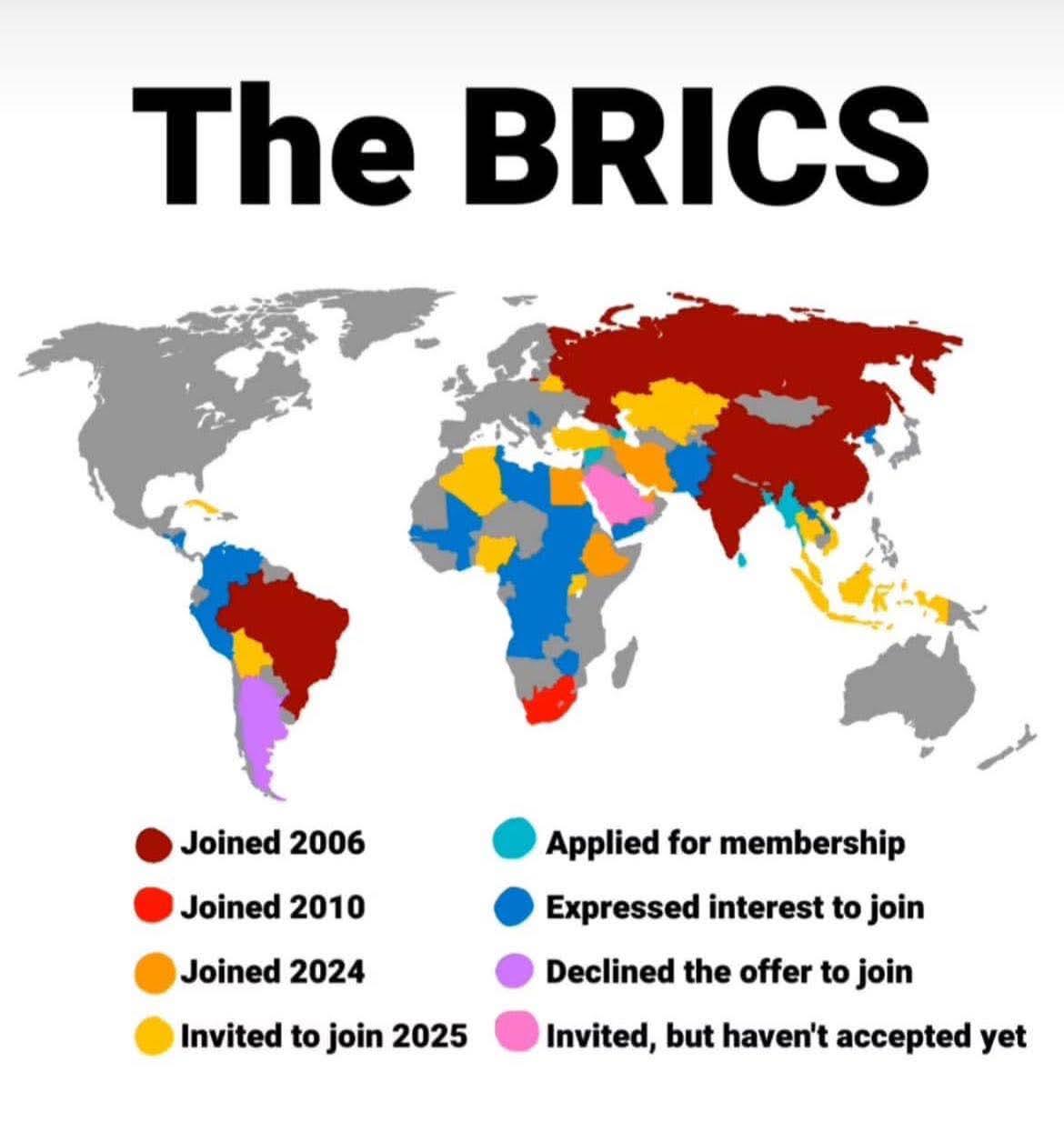BRICS Countries Map


Alex Cartwright
Senior Cartographer & GIS Specialist
Alex Cartwright is a renowned cartographer and geographic information systems specialist with over 15 years of experience in spatial analysis and data...
Geographic Analysis
What This Map Shows
The "BRICS Countries Map" illustrates the geographical locations of the five member nations: Brazil, Russia, India, China, and South Africa. This visual representation not only highlights the boundaries of these countries but also reflects their significant roles in the global economy and international relations. Each of these nations is distinct in terms of cultural heritage, population size, and economic clout, yet they share a commitment to collaboration on various fronts like trade, investment, and sustainable development.
Deep Dive into BRICS Countries
BRICS is an acronym representing an association of five major emerging economies. Together, these countries account for approximately 42% of the world's population and around 25% of the global GDP. But what makes these nations significant in the geopolitical landscape?
**Brazil** is the largest country in South America, known for its vast rainforests and rich biodiversity. With a population of over 211 million, Brazil has a diverse economy that includes agriculture, mining, and manufacturing. Interestingly, it’s also a leading producer of coffee, soybeans, and beef, which are crucial for global food supply chains.
**Russia**, the largest country in the world by land area, spans Eastern Europe and northern Asia. Its economy is heavily reliant on energy exports, particularly oil and natural gas. With a population of around 146 million, Russia plays a critical role in global energy markets, influencing prices and availability through its vast reserves.
**India** is the second-most populous country, boasting over 1.4 billion residents. Its economy is diverse and rapidly growing, with major sectors including information technology, textiles, and agriculture. India is also recognized for its rich cultural heritage, which includes a variety of languages, religions, and traditions. The country’s emerging middle class is expected to drive significant economic growth in the coming years.
**China**, with a staggering population of about 1.4 billion, is the world's most populous country and the second-largest economy. Known for its manufacturing prowess, China has become the global leader in exporting goods. Interestingly, its Belt and Road Initiative aims to enhance trade routes and economic ties across Asia and beyond, making it a pivotal player in international trade.
**South Africa**, the southernmost country on the African continent, is known for its rich mineral resources and diverse ecosystems. With a population of approximately 60 million, South Africa is characterized by its economic inequality, but it also leads in sectors like mining, agriculture, and tourism. The country serves as a gateway to African markets, making it a key player in regional trade.
Regional Analysis
Looking at the BRICS nations from a regional perspective reveals intriguing contrasts. For instance, while South America and Africa are rich in natural resources, they face significant challenges such as political instability and economic inequality. Brazil, despite its wealth of resources, grapples with issues of deforestation in the Amazon and urban poverty. In contrast, Russia's vast landmass hosts a variety of climates and natural resources, yet its economic dependency on energy exports can lead to vulnerability in fluctuating global markets.
In Asia, India and China are both experiencing rapid urbanization, yet they approach development differently. China's state-led model has resulted in swift infrastructure development, while India's democratic process has led to more gradual changes, with significant implications for governance and economic policy. Interestingly, the economic growth rates of these two nations are often compared, as they vie for the title of the world's fastest-growing major economy.
Significance and Impact
Understanding the dynamics of the BRICS countries is crucial for grasping today's global economy. These nations are not only significant due to their size and resource wealth but also because they represent a shift in global power dynamics. The BRICS alliance aims to reshape the existing global economic order, which has historically favored Western nations.
Moreover, current trends indicate that as these countries continue to grow in economic power, they are likely to have a more substantial influence on climate change policies, trade agreements, and international relations. For example, China's investments in renewable energy could transform the global energy landscape, while India’s focus on sustainable development could set new benchmarks for emerging economies.
In conclusion, the BRICS Countries Map provides more than just geographical boundaries; it is a gateway to understanding the evolving geopolitical landscape of our world. By examining these nations, we can gain insights into the challenges and opportunities that lie ahead in a rapidly changing global environment.
Visualization Details
- Published
- September 23, 2025
- Views
- 64
Comments
Loading comments...